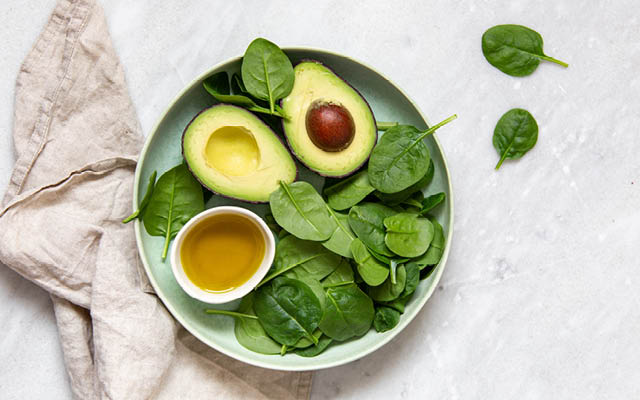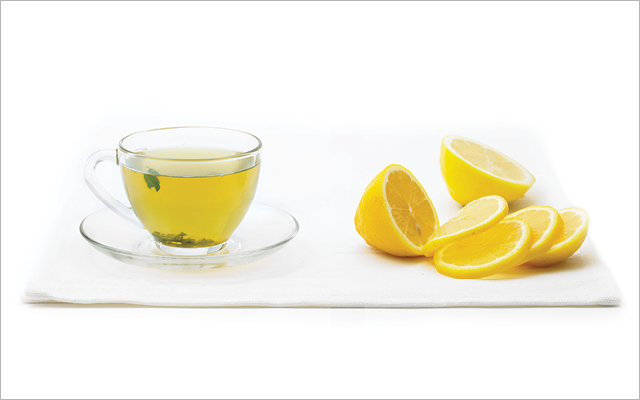Indigestion, also known as dyspepsia, can take several forms: discomfort or burning in the upper abdomen; feeling full after only a few bites of food; an uncomfortable feeling of fullness. It can also involve bloating, nausea, and acid reflux.
Most of us have experienced this misery at one time or another; some of us experience it chronically.
One contributing factor may be the standard American diet (SAD), which — in addition to its other problems — is rife with pairings that food combiners consider ill advised. The most problematic, in their view, is the tendency to eat animal proteins with starch.
Digesting proteins requires a healthy amount of hydrochloric acid (HCL) in the stomach; some food-combining advocates believe HCL may be diminished by the presence of starches and sugars. When proteins aren’t fully broken down before they leave the stomach, they can start to ferment in the GI tract, leading to uncomfortable bloating and other symptoms.
A food-combining approach may help explain why the SAD’s iconic meat-and-potatoes meal may not be ideal for our physiology, says nutritionist and Life Time master trainer Samantha McKinney, RD, CPT. “There aren’t many foods you’ll find in nature that are both high in fat and high in sugar and starch,” she explains, noting that, for some, these combinations can contribute to bloating, indigestion, and discomfort.
Cookbook author and nutrition consultant Megan Gilmore, CNC, has made food combining the centerpiece of her approach after using it for her own digestive issues. “When I first started using food combining myself, I felt better in just a matter of three days,” she notes. “My stomach was flatter and less bloated. It was such a relief.” (See “The Daily Detox” for whole-food recipes created by Gilmore.)
Ayurvedic practitioner Vanashree Belgamwar, BAMS, uses food combining as an integral part of her practice. Taking a technical approach, she disputes the digestibility of a popular breakfast: yogurt with fruit. “Fruit is acidic, whereas dairy is [more alkaline], so when you combine them, the fruit sits there in your gut and ferments until the dairy is digested,” she explains, noting that this fermentation can cause gas and other byproducts that tax the digestive system. (See “5 Questionable Food Combinations” for more.)
For other practitioners, transit time — how long particular foods require to pass through the digestive tract — is less important. “Your transit time is impacted by the cumulative meal, not by any individual food in that given meal,” says McKinney. “Your body recognizes the whole meal.”
One thing most proponents of food combining are likely to agree on, however, is the idea that nonstarchy vegetables (which includes most vegetables that can be eaten raw) combine well with just about everything.
This is the central tenet to Gilmore’s approach, not just for good digestion but to support everyday detoxification, which she suggests is easier for the body when the digestive system is working well.
Gilmore outlines four food groups that she believes are best eaten separate from one another: fresh fruit, starches, animal protein, and nuts and seeds. But they can all be combined with nonstarchy vegetables.
“This simplified approach is closer to the diet of our ancestors, who ate just one or two foods at a time as they came across them in nature,” she explains. (She offers a broad selection of simple recipes using this formula in her cookbook Everyday Detox.)
For general digestive wellness, Gilmore suggests, combine foods in these ways:
- If you’re planning a meal with meat or fish, replace the potatoes with any of an array of nonstarchy vegetables — leafy greens, summer squash, crucifers, tomatoes, peppers, onions, garlic, and so on. They all play well together. If you really miss rice with your stir-fries, try cauliflower rice.
- Likewise, pair grains, potatoes, or pasta with vegetables.
- Beans are both protein and starch, so combining them with nonstarchy vegetables is the best route. A simple stew of garlicky white beans and greens is a testament to how delicious this can be.
- The same goes for dairy. Enjoy cheese with leafy salads or melted into vegetable casseroles. Gilmore also recommends choosing cheese made from goat’s milk or sheep’s milk, which tends to be easier to digest for humans than cow’s milk.
- Eat fresh fruits by themselves, though combining fresh fruit with leafy greens in a salad or smoothie is usually fine.
Any approach to digestion will be highly individual. You may find that some combinations don’t bother you, while others consistently cause discomfort. Experiment to see what works best for your body.
This was excerpted from “What Is Food Combining and How Can It Help My Health?” which was published in the December 2022 issue of Experience Life.






This Post Has 0 Comments